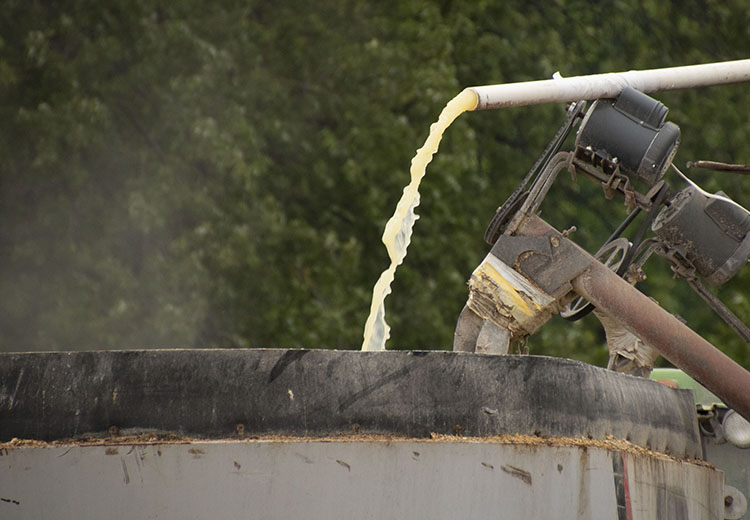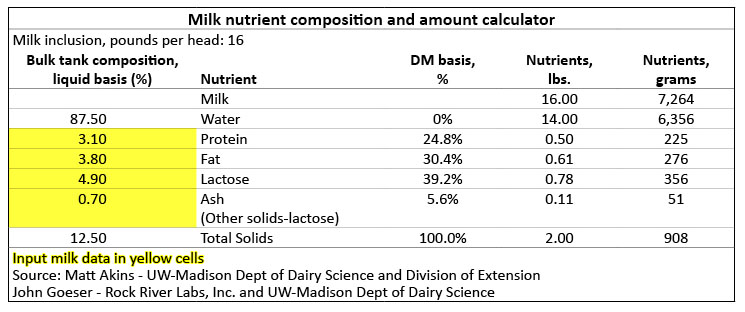
As farms across the country are faced with the reality of dumping milk and reducing production, some are looking to their rations to absorb the extra pounds of production. In a University of Wisconsin fact sheet, Matt Akins and Liz Binversie outlined opportunities for incorporating excess milk into cow, heifer, and calf rations.
In lactating cow and heifer rations, milk can be included in a total mixed ration (TMR) at a rate of 10% to 15% of the ration mix. When fed this way, it behaves similarly to water reducing the dry matter content of the feed by about 5 percentage units. However, it also supplies fat, protein, lactose (sugar), and other nutrients that should be accounted for as much as possible. You can view the table below to reference the nutrient levels milk brings to a ration.

“At 15% of the ration (as fed), this would provide approximately 16 pounds of milk or 2 pounds of milk solids (dry matter) per cow,” they wrote. “Milk inclusion should vary depending on the ration dry matter content with reduced inclusion in wetter rations.”
To that end, TMRs dry matters should run at least 45% to 50%. For some perspective, if 100 cows were fed milk at 15% of ration as fed, 1,600 to 2,000 pounds of milk could be included.
A word of warning
Any time moisture is added to the ration, additional microbial growth is a concern. Monitor TMRs with milk in them for heating or odors. An acidic preservative can be added to limit this issue. Also, be aware of the potential for greater fly pressure.
Further, the feeding of unpasteurized milk puts the herd at risk for spreading Johne’s disease, Mycoplasma, bovine leukosis, Staph. aureus mastitis, and other diseases. Obviously, pasteurization is preferred if possible, but high levels of inclusion may limit the ability to do so.
“Farms likely would need to dispose of a portion of milk via the manure lagoon or direct land application as it is likely not possible to feed all the milk each day,” they explained.
Calves can consume it, too
While Akins and Binversie don’t recommend feeding “dump milk” to dry cows or transition animals, calves can consume some of this milk. Even if farms are already feeding non-saleable milk to calves, that level can potentially be expanded some.
“Calves can consume up to 12 quarts of milk per day; however, intakes must be increased over a period of one to two weeks,” the pair said. In addition to feeding up to that level, they suggested lengthening the weaning period to 12 weeks of age or even older. That will also allow farms a chance to improve grain consumption and engage a step-down weaning program.
Two important keys proposed by Akins and Binversie were paying close attention to managing bacterial loads in the milk and utilizing acidification with citric or propionic acid or preservatives such as potassium sorbate or sodium benzoate to limit their growth.








